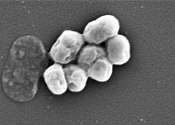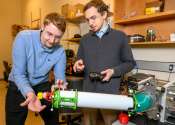Chem-Phys patch: Engineers take first step toward flexible, wearable, tricoder-like device
Engineers at the University of California San Diego have developed the first flexible wearable device capable of monitoring both biochemical and electric signals in the human body. The Chem-Phys patch records electrocardiogram ...
May 23, 2016
0
190









